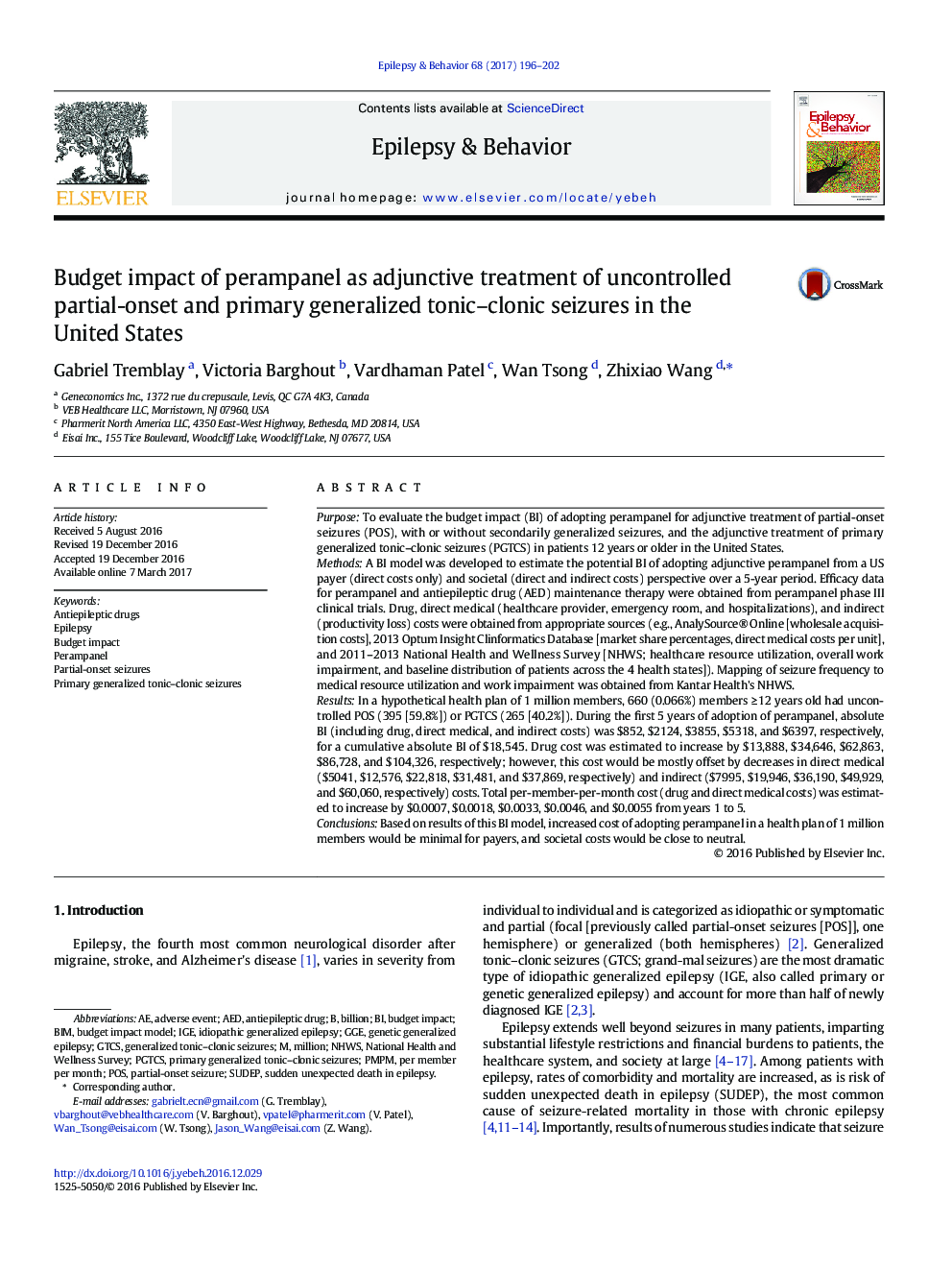| کد مقاله | کد نشریه | سال انتشار | مقاله انگلیسی | نسخه تمام متن |
|---|---|---|---|---|
| 5628054 | 1579824 | 2017 | 7 صفحه PDF | دانلود رایگان |
- Perampanel is indicated as adjunctive treatment for partial-onset seizures.
- Perampanel also is indicated as adjunctive treatment for generalized tonic-clonic seizures.
- Perampanel significantly reduced seizure frequency versus placebo in clinical trials.
- Budget impact of adding perampanel to a US health plan would be minimal for payers.
- Increased costs would be minimal, almost neutral, from a societal perspective.
PurposeTo evaluate the budget impact (BI) of adopting perampanel for adjunctive treatment of partial-onset seizures (POS), with or without secondarily generalized seizures, and the adjunctive treatment of primary generalized tonic-clonic seizures (PGTCS) in patients 12 years or older in the United States.MethodsA BI model was developed to estimate the potential BI of adopting adjunctive perampanel from a US payer (direct costs only) and societal (direct and indirect costs) perspective over a 5-year period. Efficacy data for perampanel and antiepileptic drug (AED) maintenance therapy were obtained from perampanel phase III clinical trials. Drug, direct medical (healthcare provider, emergency room, and hospitalizations), and indirect (productivity loss) costs were obtained from appropriate sources (e.g., AnalySource® Online [wholesale acquisition costs], 2013 Optum Insight Clinformatics Database [market share percentages, direct medical costs per unit], and 2011-2013 National Health and Wellness Survey [NHWS; healthcare resource utilization, overall work impairment, and baseline distribution of patients across the 4 health states]). Mapping of seizure frequency to medical resource utilization and work impairment was obtained from Kantar Health's NHWS.ResultsIn a hypothetical health plan of 1 million members, 660 (0.066%) members â¥Â 12 years old had uncontrolled POS (395 [59.8%]) or PGTCS (265 [40.2%]). During the first 5 years of adoption of perampanel, absolute BI (including drug, direct medical, and indirect costs) was $852, $2124, $3855, $5318, and $6397, respectively, for a cumulative absolute BI of $18,545. Drug cost was estimated to increase by $13,888, $34,646, $62,863, $86,728, and $104,326, respectively; however, this cost would be mostly offset by decreases in direct medical ($5041, $12,576, $22,818, $31,481, and $37,869, respectively) and indirect ($7995, $19,946, $36,190, $49,929, and $60,060, respectively) costs. Total per-member-per-month cost (drug and direct medical costs) was estimated to increase by $0.0007, $0.0018, $0.0033, $0.0046, and $0.0055 from years 1 to 5.ConclusionsBased on results of this BI model, increased cost of adopting perampanel in a health plan of 1 million members would be minimal for payers, and societal costs would be close to neutral.
Journal: Epilepsy & Behavior - Volume 68, March 2017, Pages 196-202
